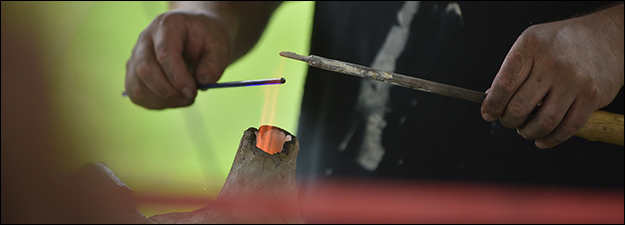Metaphor: Medieval and Modern
Sponsoring Organization(s)
Special Session
Organizer Name
Kerilyn Harkaway-Krieger
Organizer Affiliation
Gordon College
Presider Name
Curtis Gruenler
Presider Affiliation
Hope College
Paper Title 1
"Hū sēo þrāg gewāt, / genāp under niht-helm . . .!": Paradoxes of Personification and Metonymy in Medieval English Poems on Transience
Presenter 1 Name
Evelyn Reynolds
Presenter 1 Affiliation
Indiana Univ.-Bloomington
Paper Title 2
Rhetoric and Seeing Metaphor in Chaucer's Franklin's Tale
Presenter 2 Name
Joseph Turner
Presenter 2 Affiliation
Univ. of Louisville
Paper Title 3
Captive Metaphors: The Boethian Prison
Presenter 3 Name
Corey Sparks
Presenter 3 Affiliation
California State Univ.-Chico
Start Date
15-5-2016 10:30 AM
Session Location
Fetzer 1010
Description
Modern theories of metaphor abound, having made rich use of the many theoretical developments in the twentieth and twenty-first centuries to consider the significance of figurative language. One of the most prominent twentieth-century theorists of metaphor, Paul Ricouer, in fact brought together in his massive ouevre ancient and medieval conceptions of figurative language with new philosophical and psychological investigations. Psychoanalytical thought from Lacan on has taken seriously the psychic work of metaphor, while in linguistics recent developments (such as the category of "conceptual metaphor") has investigated with great rigor the fundamental cognitive work of metaphor (pioneered by George Lakoff). Structural linguists, such as Roman Jakobson, and rhetoricians, such as Kenneth Burke, have also investigated the significance of metaphor to language more generally. Many of these contemporary theories have proven useful to medievalists, helping us to explore the significance of key metaphors, or of metaphor more generally in medieval texts. The concern of anachronism often haunts such work, however. While thinking about metaphor was not as central to the exegesis and systematic philosophies of the Middle Ages as, say, allegory and typology, many medieval theologians and philosophers did consider metaphor (in Latin, metaphora or similitudinis), or built on the work of classical rhetoricians who discussed metaphor. These papers compare aspects of medieval and modern theories of metaphor, looking for both similarities and differences how metaphor's operations and significance are understood, and exploring where and how it might be appropriate for medievalists to rely on contemporary theories to understand medieval texts.
Metaphor: Medieval and Modern
Fetzer 1010
Modern theories of metaphor abound, having made rich use of the many theoretical developments in the twentieth and twenty-first centuries to consider the significance of figurative language. One of the most prominent twentieth-century theorists of metaphor, Paul Ricouer, in fact brought together in his massive ouevre ancient and medieval conceptions of figurative language with new philosophical and psychological investigations. Psychoanalytical thought from Lacan on has taken seriously the psychic work of metaphor, while in linguistics recent developments (such as the category of "conceptual metaphor") has investigated with great rigor the fundamental cognitive work of metaphor (pioneered by George Lakoff). Structural linguists, such as Roman Jakobson, and rhetoricians, such as Kenneth Burke, have also investigated the significance of metaphor to language more generally. Many of these contemporary theories have proven useful to medievalists, helping us to explore the significance of key metaphors, or of metaphor more generally in medieval texts. The concern of anachronism often haunts such work, however. While thinking about metaphor was not as central to the exegesis and systematic philosophies of the Middle Ages as, say, allegory and typology, many medieval theologians and philosophers did consider metaphor (in Latin, metaphora or similitudinis), or built on the work of classical rhetoricians who discussed metaphor. These papers compare aspects of medieval and modern theories of metaphor, looking for both similarities and differences how metaphor's operations and significance are understood, and exploring where and how it might be appropriate for medievalists to rely on contemporary theories to understand medieval texts.

